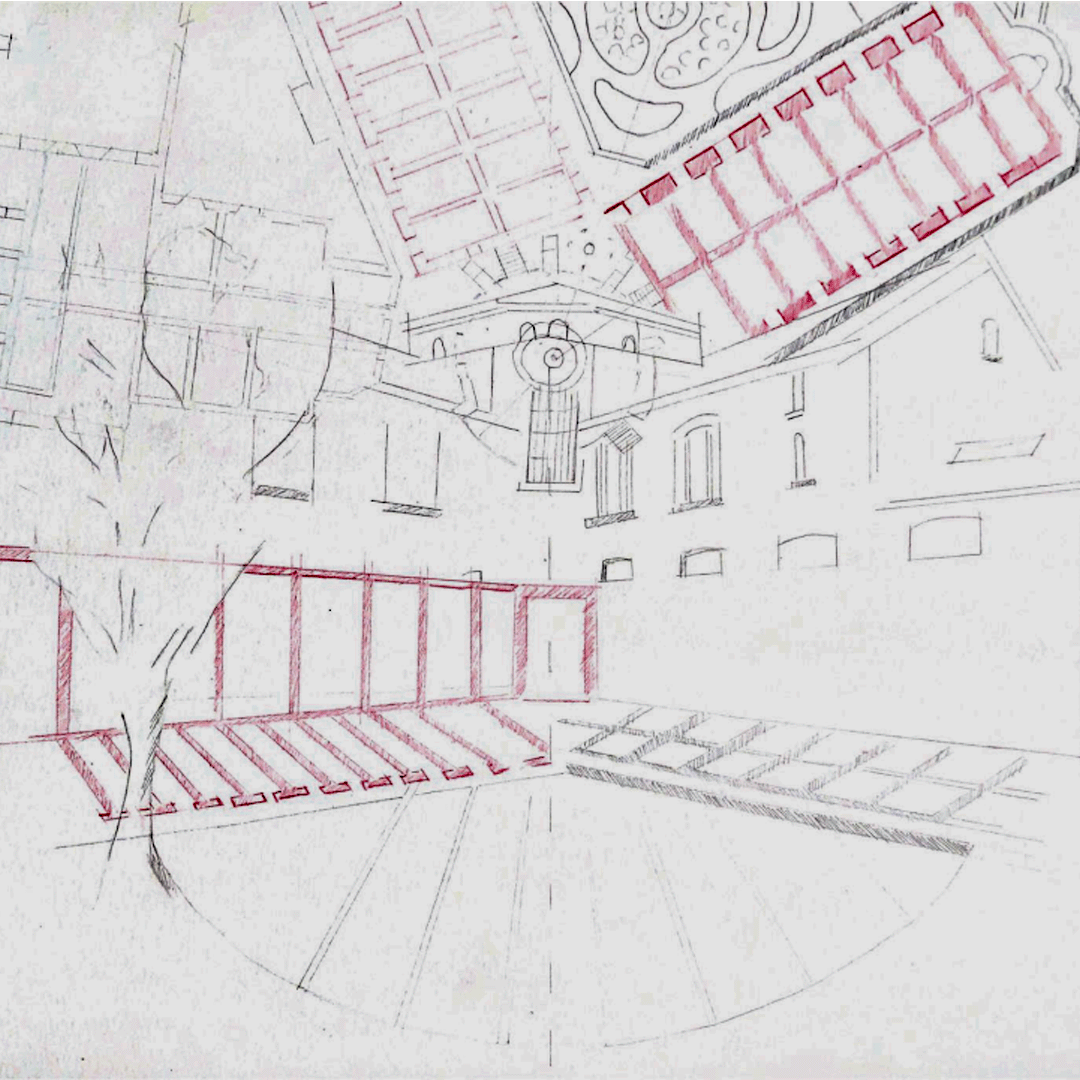
Can qualities of intervention change memory association of a place from negative to positive?
1. Context
On a surface of 14.500 m2 in the city of Hasselt in Belgium, a prison dates from 1859 to be assigned as a suitable location for the Faculty of Law. An open call competition that Noa architects won and completed the project from 2008 until 2015. A campus in the heart of the city. A fun experience for law students that will add to their educational journey. Nowadays, hundreds of students from Hasselt University study the application of the law there in complete freedom, but in the past, it was only a rigid building where you get locked under violation. But then, can small qualities of intervention change the memory association of a place from negative to positive?
2. Beyond Interventions
The old prison has a fascinating history. Despite seeing symbols that refer to the old function and seeing the structure of the old prison preserved, you will never experience the space with bad emotions. It’s a series of contemporary interventions that you see, and you may not always see but perceive. It’s between light, color, safety, openness, and thermal comfort. It’s a series of synergies that have been uncovered that let you perceive the space in a different feeling. A captivating insight into a space you would have preferred not to enter before.
The thought behind the sketch is a process that captures the totality of history and the present. It’s answering the question of How can a place that is associated with negative emotions (Tragedy, death, crime, and violence) be transformed to a positive space (less rigid, more open, secure, and happier). Showing the analogy through a perspective of the new interventions and at the same time traces of the plan which is the case on site. The drawing focuses on the spaces in between, the courtyard which dates back to the 19th century that now serves as a meeting point for students. Showing the new intervention in the drawing of the red metal-framed full-height glass that opened the opportunity for students to see the courtyard and brought light into the space. It’s a total contradiction of two extremes of what was before, a solid concrete wall that people were locked in the cells behind and now it’s clear.
Before, behind the solid walls lay the cells for the prisoners. Now, those cells are transformed into student rooms that they can use freely when they want concentration.
3. Is it the memory we are changing or the memory association?
“There is no place without memory… no memory without place; I say ‘place’. rather than ‘space. Because Architecture is as much a response to place…, a conversation with place. The built forms, their shapes, structures, and materials, have a memorial character. And this is what forms the narrative. (Malpas, 1999) Neither we nor our memories are fixed in place. Yet the memory of the place is narrated through the foundation, materiality, and forms.
But the design intention that is encoded in a particular architectural narrative is usually expected to shape the life of the building after construction and might be able to determine the future narratives and so the future uses and meanings yet the only narrative that can reliably continue to have power in the life of a building is the narrative that the building itself remembers, that the building itself embodies, contains. (Malpas, 2011)
In this sense, in the old prison example, the memory of the place is still and will always be engraved in your mind that it’s a prison that was set years back when the future of the building was being determined. However, the idea of memory association towards negativity from the old prison is the one that could be transformed not the memory of the prison itself.
4. New within the old
“It is said that one of the most impressive things about the music of Johann Sebastian is its Architecture. Its construction seems clear and transparent. It is possible to pursue the details of the melodic, harmonic and rhythmical elements without losing the feeling for the composition as a whole – The whole which makes sense of the details” (Zumthor, P. (1999). For me there was something significant when I walked through the space like a university, there was something that explained Zumthor’s words in context, and there was something telling me the story of the past but showing me a better bright future. Yet, showing me the past elements as new spots that I seek to discover in every area of the place along while experiencing the harmony and the rhythm of the new elements that have been integrated into the space. Other examples not in the drawing are The series of openings in the ceiling openings that brought more light into the building, the creative artistic tiles that you see in the corridors today opposing what was before.
The transformed prison is conceived as a small-scale urban space with a lot of details and open spaces, but also alleyways and more hidden corners where, even after a long period, students will be able to continue discovering new spots and transform their function but without losing the core of the place.
5. From, through, beyond
The old prison in Hasselt is a great case study of repurposing old buildings that had a negative impact, creating a positive change for future generations. However, repurposing the historic structure of a prison into a university does sound depressing until you see the series of interventions that were done that created a healthy, memorable, and dynamic experience for the students on campus especially when the site is in the city center. The revitalization attracted highly skilled talented law students by creating unique and stimulating experiences that redefined their educational journey and made it more playful and empowered the community.
Bibliography:
-Malpas, J. (1999). Place and experience. Cambridge: Cambridge University Press.
-Malpas, J. (2011). Objectivity and self-disclosedness: The phenomenological working of art’. In J. Parry (Ed.), Art and phenomenology (54-76). London: Routledge.
-Zumthor, P. (1999). Thinking architecture. Basel: Birkhäuser.

